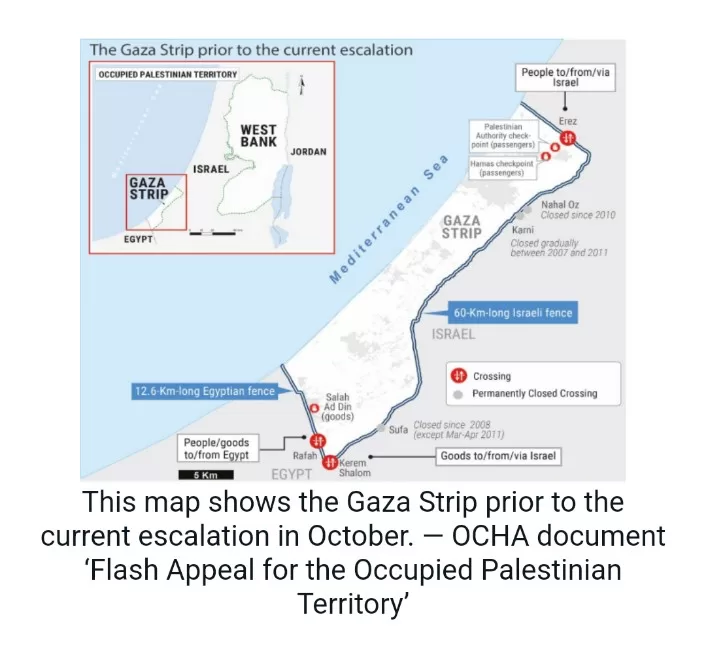Gaza, a coastal enclave with a rich history along ancient trading and maritime routes along the Mediterranean, has been a focal point of historical turmoil. As a region encompassing over two million Palestinian inhabitants, its trajectory over the past century has been marked by significant milestones.
1948 — The End of British Colonial Rule
As the sun set on British colonial rule in Palestine in the late 1940s, tensions between Jewish and Arab populations reached a boiling point. This culmination led to a full-scale war between Israel and its neighboring Arab nations in May 1948.
The influx of tens of thousands of Palestinian refugees, displaced or driven from their homes, sought sanctuary in Gaza. The Egyptian army claimed a narrow coastal strip, 40 kilometers in length, stretching from the Sinai to just south of Ashkelon. This influx tripled Gaza’s population, swelling it to approximately 200,000.
1950s and 1960s — Egyptian Military Governance
For two decades, Egypt maintained control over the Gaza Strip under a military governor. Palestinians were granted the opportunity to study and work in Egypt. Armed Palestinian “fedayeen,” many of whom were refugees, initiated attacks on Israel, prompting retaliations.
The United Nations established the United Nations Relief and Works Agency (UNRWA), providing services to 1.6 million registered Palestine refugees in Gaza, as well as Palestinians in Jordan, Lebanon, Syria, and the West Bank.
1967 — War and Israeli Occupation
In the 1967 Middle East conflict, Israel captured the Gaza Strip. A census that year reported a population of 394,000 in Gaza, with at least 60 percent being refugees.
Following the departure of Egyptian forces, many Gazan laborers secured employment in Israel’s agriculture, construction, and service industries, easily accessible at the time. Israeli troops remained to govern the territory and protect the settlements constructed in the subsequent decades, which became a source of growing Palestinian discontent.
1987 — First Palestinian Uprising, Emergence of Hamas
Twenty years after the 1967 war, the first intifada, or uprising, erupted. It commenced in December 1987, ignited by a tragic traffic accident in Gaza’s Jabalya refugee camp, where an Israeli truck collided with a vehicle carrying Palestinian workers, resulting in four deaths. This incident sparked stone-throwing protests, strikes, and closures.
Capitalizing on the escalating unrest, the Muslim Brotherhood established an armed Palestinian faction, Hamas, with a stronghold in Gaza. Hamas emerged as a rival to Yasser Arafat’s secular Fatah party, which led the Palestine Liberation Organisation.
1993 — The Oslo Accords and Palestinian Semi-Autonomy
In 1993, a historic peace accord was signed between Israel and the Palestinians, leading to the creation of the Palestinian Authority. Under this interim agreement, Palestinians gained limited control in Gaza and Jericho in the West Bank. Yasser Arafat returned to Gaza after decades in exile.
The Oslo process conferred some autonomy to the newly formed Palestinian Authority, envisioning statehood within five years. However, this vision remained unfulfilled. Israel accused Palestinians of breaching security agreements, while Palestinians expressed frustration over continued Israeli settlement expansion.
Hamas and Islamic Jihad carried out bombings, prompting Israel to impose tighter restrictions on Palestinian movement out of Gaza. Hamas also capitalized on mounting Palestinian criticisms of corruption, nepotism, and economic mismanagement within Arafat’s inner circle.
2000 — Second Palestinian Intifada
In 2000, Israeli-Palestinian relations reached a new nadir with the outbreak of the second Palestinian intifada, ushering in an era of suicide bombings, shootings by Palestinians, Israeli airstrikes, demolitions, no-go zones, and curfews.
Gaza International Airport, symbolizing thwarted Palestinian economic independence and the sole direct link to the outside world not controlled by Israel or Egypt, was among the casualties. Opened in 1998, Israel deemed it a security threat, and after the September 11, 2001 attacks on the United States, Israel destroyed its radar antenna and runway.
Gaza’s fishing industry, a vital source of income for tens of thousands, suffered as Israel reduced Gaza’s fishing zone to curb boat-based weapons smuggling.
2005 — Israeli Evacuation of Gaza Settlements
In August 2005, Israel executed a complete withdrawal of its troops and settlers from Gaza, effectively isolating the region from the outside world. Palestinians subsequently dismantled the abandoned buildings and infrastructure for scrap. This evacuation facilitated increased movement within Gaza, spawning a “tunnel economy” as armed groups, smugglers, and entrepreneurs quickly dug scores of tunnels into Egypt.
However, the removal of settlement factories, greenhouses, and workshops that employed numerous Gazans presented challenges.
2006 — Isolation Under Hamas
In 2006, Hamas achieved an unexpected victory in Palestinian parliamentary elections and later assumed full control of Gaza, overthrowing factions loyal to Arafat’s successor, President Mahmoud Abbas.
Much of the international community withheld aid to Hamas-controlled areas, deeming the group a terrorist organization. Israel prevented tens of thousands of Palestinian workers from entering the country, cutting off a crucial source of income. Israeli airstrikes crippled Gaza’s sole electrical power plant, causing widespread blackouts. Citing security concerns, Israel and Egypt imposed tighter restrictions on the movement of people and goods through Gaza’s crossings.
Hamas’s ambitious plans to redirect Gaza’s economy eastward, away from Israel, faltered before they could be implemented. Viewing Hamas as a threat, Egypt’s military-backed leader, Abdel Fattah al-Sisi, who assumed power in 2014, closed the border with Gaza and destroyed most of the tunnels. Once again isolated, Gaza’s economy regressed.
The Cycle of Conflict
Gaza’s economy has repeatedly suffered in the cycle of conflict, attack, and retaliation between Israel and Palestinian fighters. Prior to 2023, one of the most severe confrontations occurred in 2014, when Hamas and other groups launched rockets at major Israeli cities. In response, Israel conducted airstrikes and artillery bombardments that devastated Gaza neighborhoods, resulting in over 2,100 Palestinian casualties, predominantly civilians, while Israel reported 67 soldiers and six civilians among its dead.
2023 — A Surprise Attack
On October 7, 2023, Hamas fighters initiated a surprise attack on Israel, advancing through towns, causing hundreds of casualties, and taking dozens of hostages to Gaza. In retaliation, Israel launched extensive airstrikes on Gaza, resulting in the destruction of entire districts and marking one of the most catastrophic episodes in the 75-year history of the conflict.







